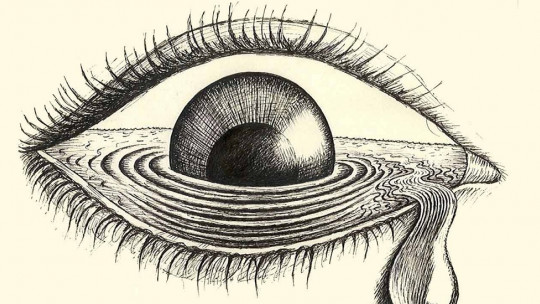
Although the problem of suicide in our society has always been considered a taboo topic, it is increasingly being treated with greater transparency.
In fact, today all the factors that influence this behavior are studied in depth, and It is done through suicidology Below we will see in detail what this field of knowledge consists of.
What is suicidology
Suicidology is the science that studies all suicidal behaviors, but it does not stop there, but rather tries to develop a series of guidelines to prevent them. These objectives are achieved by drawing on two great branches of science, which are Psychology and Sociology.
Suicidology It does not focus only on suicide, but is also responsible for studying other self-harming behaviors that do not necessarily have to lead to death, and also from suicidal ideation and parasuicides.
Suicidology in Spain
In Spain this discipline is championed by the Spanish Society of Suicidology, born in 2015 Its objective is to bring together all groups of health professionals and other areas that in one way or another may have a relationship with potentially suicidal people, to establish and comply with a series of guidelines whose objective is to reduce the prevalence of this phenomenon.
Likewise, they try to make the problem of suicide visible, since it has traditionally been omitted from the majority of the media and even within society itself, a fact that, they affirm, makes it much more difficult to address the problem of suicide. an effective way.
The Spanish Society of Suicidology annually organizes conferences and conferences dedicated to bringing together experts in suicidal behavior and thus improving the protocols for the prevention of these acts
What do we understand by suicide?
It is known as suicide act of an individual that involves voluntarily taking his own life It can be done through a multitude of ways, but the most frequent are hanging, the use of poisons and the use of firearms.
There are risk factors that make a person more likely to commit suicide For example, some mental disorders, receiving harassment of some kind, unresolved grief, loss of employment, alcoholism and use of other substances, among others.
Suicidal behavior in history
This phenomenon has occurred throughout the history of humanity, but the perception towards it has not always been the same. In ancient Greece, suicide could even be frowned upon if it was done as a way to avoid dishonor. In Rome it was initially legal, but later it was prohibited, for a purely economic reason (the death of slaves generated losses).
But what marked its stigma in Western society was the arrival of the Church, which began to consider it a sin, since the sixth commandment, “thou shalt not kill,” also implied not killing oneself.
However, with the Renaissance another shift was experienced in the perception of suicide, defending it in a certain way. And already with the Enlightenment, authors such as David Hume promulgated that since it did not affect anyone other than the individual himself, and in a certain way was for his benefit, suicide could not be a crime.
In the 19th century, the focus of the religious issue definitely shifted to mental health of the suicidal individual, going from talking about sin to beginning to talk about madness. Finally, in the middle of the 20th century, suicide ceased to appear in the penal codes of many European countries.
Epidemiology
The figures surrounding this phenomenon, at a global level, are devastating Approximately one million people in the world decide to take their own lives, and do so. This is one voluntary intentional death every 2 minutes.
The epidemiology of suicide in Spain shows us that every year about 3,500 citizens take their lives, the vast majority being men (3 men for every woman). Regarding age, the highest suicide rates are observed in men between 40 and 59 years old. It is worth highlighting the concern about the increase in data experienced in 2019, almost 10% more compared to the previous year.
Suicidal ideation
Generally, before reaching the act of suicide, A series of self-destructive thoughts pass through the individual’s mind These ideations can occur in a wide spectrum, from the mere imagination of “what would happen if…”, to the elaboration of a detailed plan that ends inexorably in the deprivation of one’s own life.
There are a series of phases during suicidal ideation:
But, faced with this system of phases, also Suicidal behavior can occur suddenly, for example due to an extremely high peak of stress (coupled with another series of factors, of course).
When the individual is in some phase of suicidal ideation, they usually show a series of symptoms that should be like a “red alert” for all the people around them, especially for health professionals. would include anhedonia, anxiety-depressive symptoms, loss of sleep and/or appetite and difficulties concentrating, among others.
parasuicide
Parasuicide is a self-injurious behavior in which the individual voluntarily brings themselves to the brink of death, knowing that it is unlikely to achieve that goal, with the intention of attracting the attention of the people around them. The main difference, in this case, is that the person does not really want to die.
Likewise, it is a very serious behavior that requires putting in place all possible mechanisms so that the person receives appropriate treatment and stop this type of behavior, solving the problems that are causing them.
Murder-suicide
This is a different typology of suicide, which would be one in which the person kills (or at least attempts to) other individuals just before committing suicide, or at the same time.
The typology and underlying motivations that lead to it are very varied We can find cases of people who provide the means to die for a disabled loved one, others who kill people in their immediate environment and even cases of suicide attacks, whether through shootings, explosives, vehicles, etc.
self-destructive behavior
They would be all those behaviors that have the objective of deliberately inflicting harm on oneself, but not necessarily leading to death since most of them tend to be much more subtle.
These behaviors can be classified into two types.
Direct self-harming behaviors
They are intended to cause immediate harm, and are carried out through all types of physical violence (trauma, incisions with sharp objects, burns, etc.). The most extreme expression of this behavior would, indeed, be suicide.
Indirect self-harming behaviors
Instead, These types of actions seek (consciously or unconsciously) long-term harm Among them we would find substance abuse (alcohol, drugs, etc.), risky sexual practices (without the use of adequate protection), playing dangerous sports, participating in uncontrolled gambling, or suffering from eating disorders.
suicide note
It is a key element because, although it obviously does not serve to prevent the death of that specific individual, it does help. It provides us with a lot of information about the reasons that led you to make such a fatal decision so that experts can work with very valuable data in order to create more effective anti-suicide protocols, which allow them to save the lives of other people who find themselves in similar situations.
The suicide note is an element used by one in six people who decide to take their own life, although according to studies it seems to be a strongly cultural factor, since in some societies the figure increases to one in two.
The objectives they seek when writing these lines prior to death are of a varied nature. Some aim to alleviate the suffering of their loved ones, while others, on the contrary, aim to delve into it, making them feel responsible for this decision and even to indicate what they want to be done with their body. Others use it more pragmatically to explain the reasons that led them to do so. Some take advantage of the occasion to express what they never dared to do and what tormented them.
But There are also reasons why they don’t write that suicide note Some are simply focused on the more practical preparations for the suicidal act and do not stop to think about writing. Others try to pretend that the death is accidental or even that they have been murdered.
In some cases, the decision is sudden (even if it has been ruminated for a while) and there is no room for a note. In some cases the person simply has nothing to say or, more dramatically, no one to say it to. Finally, there are those who do not know how to express their message, or simply do not want to do so.
There is a way out
Before finishing, it is important to make it clear that there are always people willing to help anyone who is going through a bad time. Suicide should never be the solution If you need help, do not hesitate to call the hope line (717 00 37 17), whatever the day or time. On the other end of the line you will find a professional willing to lend a hand.








